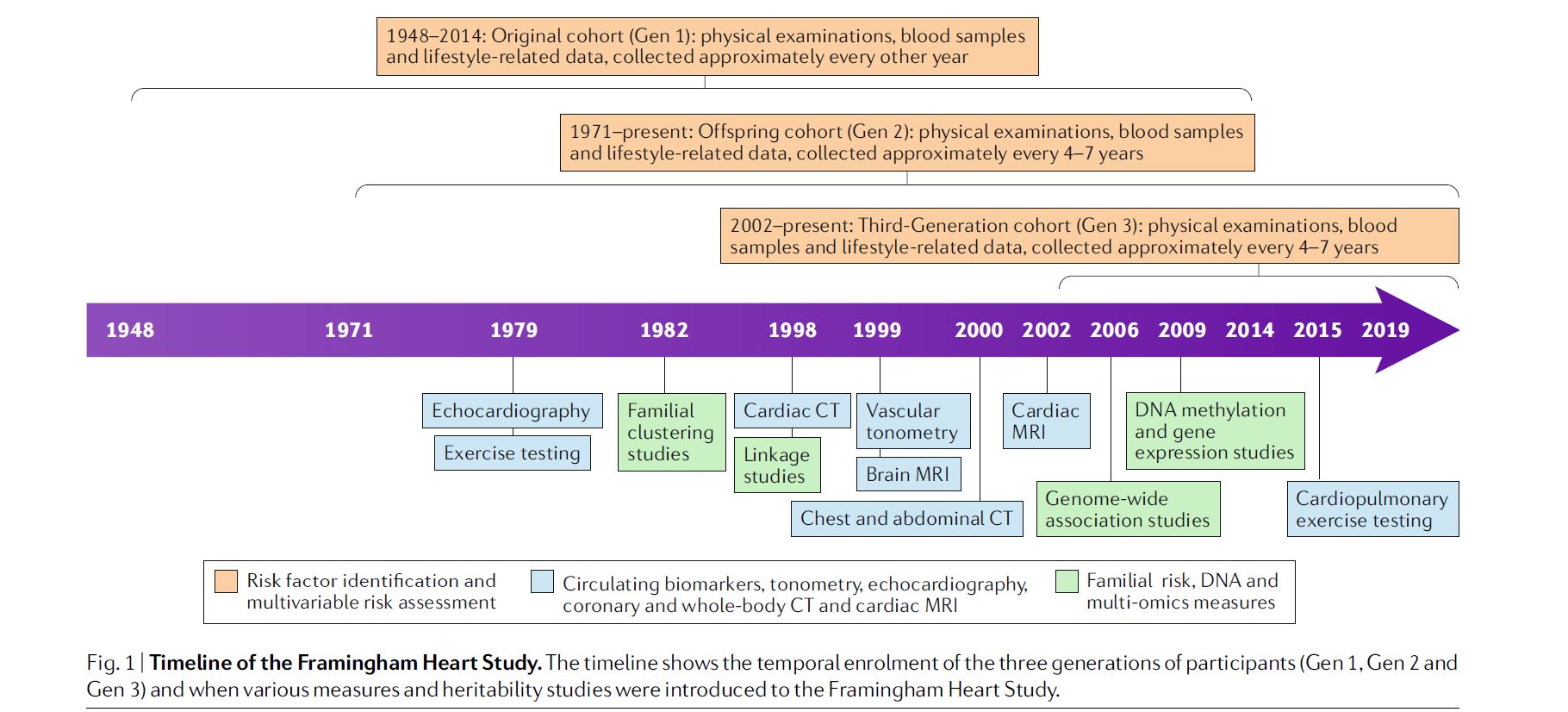History of the Framingham Heart Study
Cardiovascular disease (CVD) is the leading cause of death and serious illness in the United States. In 1948, the Framingham Heart Study – under the direction of the National Heart Institute (now known as the National Heart, Lung, and Blood Institute or NHLBI) – embarked on an ambitious project in health research. At the time, little was known about the general causes of heart disease and stroke, but the death rates for CVD had been increasing steadily since the beginning of the century and had become an American epidemic. The Framingham Heart Study became a joint project of the National Heart, Lung, and Blood Institute and Boston University.
Identifying major CVD risk factors
Over the years, careful monitoring of the Framingham Study population has led to the identification of the major CVD risk factors – high blood pressure, high blood cholesterol, smoking, obesity, diabetes, and physical inactivity – as well as a great deal of valuable information on the effects of related factors such as blood triglyceride and HDL cholesterol levels, age, gender, and psychosocial issues. Although the Framingham cohort is primarily Caucasian, the importance of the major CVD risk factors identified in this group have been shown in other studies to apply almost universally among racial and ethnic groups, even though the patterns of distribution may vary from group to group. In the past half century, the Study has produced approximately 1,200 articles in leading medical journals. The concept of CVD risk factors has become an integral part of the modern medical curriculum and has led to the development of effective treatment and preventive strategies in clinical practice.
The Framingham Heart Study continues to make important scientific contributions by enhancing its research capabilities and capitalizing on its inherent resources. New diagnostic technologies, such as echocardiography (an ultrasound examination of the heart), carotid artery ultrasound, magnetic resonance imaging of the heart and brain, CT scans of the heart and its vessels and bone densitometry (for monitoring osteoporosis), have been integrated into past and ongoing protocols.
While pursuing the Study’s established research goals, the NHLBI and the Framingham investigators are expanding their research into other areas such as the role of genetic factors in CVD. One project under way will utilize genetic material from immortalized cell lines of all of our cohorts. Framingham investigators also collaborate with leading researchers from around the country and throughout the world on projects in stroke and dementia, osteoporosis and arthritis, nutrition, diabetes, eye diseases, hearing disorders, lung diseases, and genetic patterns of common diseases.
The unflagging commitment of the research participants in the NHLBI Framingham Heart Study has made more than a half century of research success possible. We continue with an ambitious research agenda and look forward to new discoveries in the decades to come.

